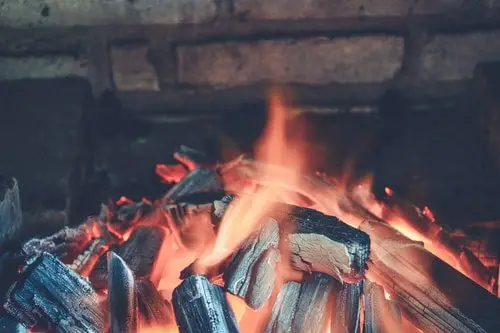Staying warm especially in cold weather is our top priority as humans. While we do our best physically, our organs also have their part to play internally. This article is will help enlighten you on how the human body stay warm.

Human beings are endotherms — they are capable of generating internal heat. Hence, they maintain a body temperature that is independent of their environment. They do this with the aid of thermoregulatory mechanisms.

Thermoregulation refers to the processes that aid organisms to maintain a constant internal temperature, irrespective of the temperature of their environment.
How Does the Human Body Stay Warm?
The hypothalamus is the part of the brain that controls thermoregulation. It sends signals to the nervous system, muscles, organs, and glands when there is a fall or rise in the internal body temperature. There are different thermoregulation mechanisms employed by the human body to regulate its internal body temperature and ensure optimal body warmth.
They include vasoconstriction and vasodilation, body metabolism, mechanism of glands and hormones, contraction and relaxation of muscles, and sweat regulation.
Vasoconstriction And Vasodilation.
Vasodilation refers to the dilation, or expansion of blood vessels, while vasoconstriction refers to the constriction of blood vessels.
When environmental temperature drops, the blood vessels close to the surface of the skin constrict, while blood vessels in the deeper layers of the skin dilate. When this happens, little blood is found at the surface of the skin, which is responsible for the characteristic blue color of the skin when the environment temperature is very low, or when you dip your finger in ice.
The blue color is due to a lack of blood close to the surface of the skin. Since little blood flows close to the surface of the skin, little heat is expended to the environment.
Blood flowing close to the surface of the skin releases heat to the environment. Vaso constriction of the blood vessels close to the skin surface restricts the amount of blood that flows close to the skin surface, and hence reduces heat loss.

Sweat Regulation.
The human skin secretes very little amounts of sweat when there’s a considerable decline in external temperature, but secretes a relatively large amount of sweat when the external temperature is high.
Evaporation of sweat from the surface of the skin cools the skin. Cool skin is the last thing the human body needs when trying to stay warm. Hence, in cold, the sweat glands become inactive and produce very little sweat, to reduce the cooling effect caused by the evaporation of sweat from the skin surface.
Hairs.
Like other animals, human hairs serve as a source of warmth for the human body. When external temperature drops, nerve impulses are said to the hair effector muscles. This impulses the effector muscles to contract, raising the hairs of the skin, and in some cases, causing goosebumps. This explains why goosebumps are common in cold weather.
The raised hair traps air next to the skin. Naturally, and is a poor conductor. Hence, the layer of air trapped close to the skin prevents heat from escaping into the environment.
Contraction And Relaxation Of Muscles.
The contraction and relaxation of muscles produce heat. Like other cells, the muscle cells contain mitochondria, but they have a relatively large amount of mitochondria than other cells. The mitocontrols is the powerhouse of cells. They produce the energy used by cells, with heat as a by-product.
This heat helps the human body greatly in thermoregulation. For these mitochondria to produce more heat, the muscles have to be at work. Hence, skeletal muscles produce more heat than other muscles. This is because they are usually involved in most of our activities.
The contraction of these muscles requires energy released from the mitochondria. The greater the energy produced, the greater the heat produced. This is quite noticeable during exercise. The consistent contraction and relaxation of the skeletal muscles the internal body temperature to rise.
When the external temperature is very low, the skeletal muscles contract rapidly, causing shivering.
Body Metabolism
To stay warm, the human body increases its metabolic rate. Body metabolism generates a major amount of internal body heat. When the external temperature drops, the hypothalamus stimulates organs, glands, and nerves to increase the body’s metabolic rate.
Even exercise increases the body’s metabolic rate. The more we exercise, the more energy is required to fuel the muscles at work. This energy is produced from the breakdown of food substances by the mitochondria. This process — the breakdown of substances — is generally known as catabolism, a very important metabolic process.
Glands And Hormones.
Apart from the sweat glands, the thyroid gland also aids thermoregulation. Generally, the thyroid gland regulates body metabolism. When external temperature drops, the thyroid gland, through the thyroid hormones increases body metabolism. They increase the amount of energy produced by cells, and hence, increase appetite.
The adrenal gland also aids thermoregulation. The adrenal gland secretes epinephrine (adrenalin), norepinephrine, and other hormones. Adrenalin popularly called the emergency hormone, is secretes by the adrenal gland when we feel threatened.
Norepinephrine works alongside epinephrine to regulate the body’s activities under such circumstances. They increase heart rate, blood sugar levels, and even the output of blood from the heart. Generally, they increase the body’s metabolic rate. These hormones cause the body to produce extra energy, and inadvertently, extra heat.
The human body also derives warmth from other sources. The food we eat could also serve as a means of raising body heat. Such foods are referred to as thermogenic. These foods promote lipolysis in the body – the process of breaking down body fat to be used as energy. Hence, these foods also increase metabolism.
Examples of thermogenic foods include coffee, coconut oil, green tea, dairy products, legumes, and many more.
Generally, the main method through which the human body stays warm is through the increase of body metabolism. Hormones, thermogenic foods, and even rapid muscle contraction increase body metabolism.
Human beings do not have thick furry coats to keep them warm in freezing weather. Hence, they have to depend on thick clothing and other external means of warmth. In as much as humans are endotherms, they also need other sources of warmth, to stay warm.
